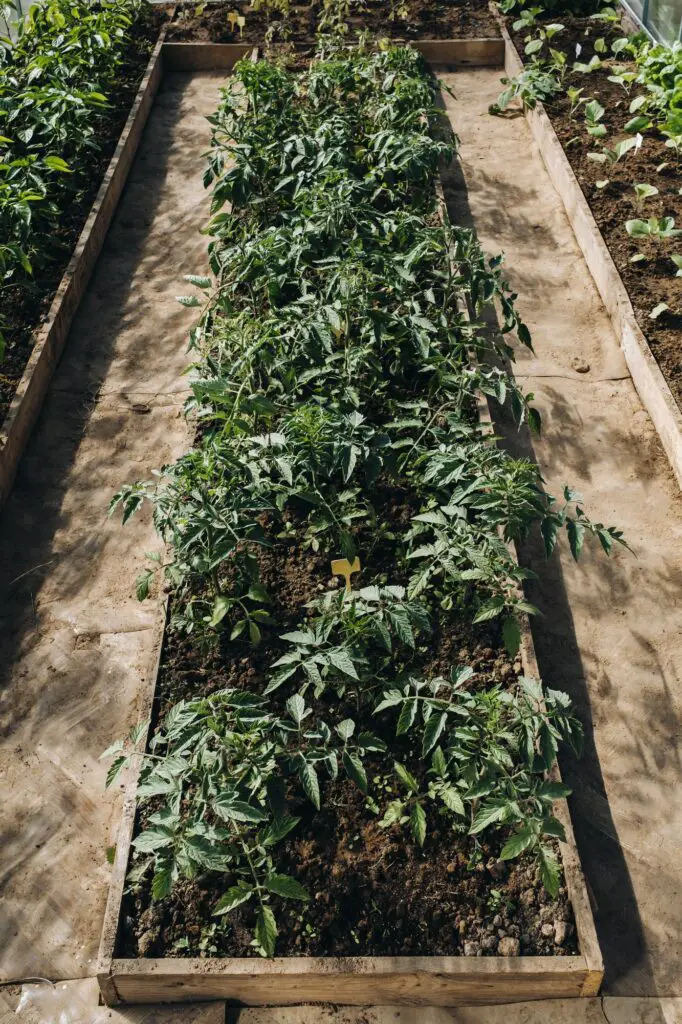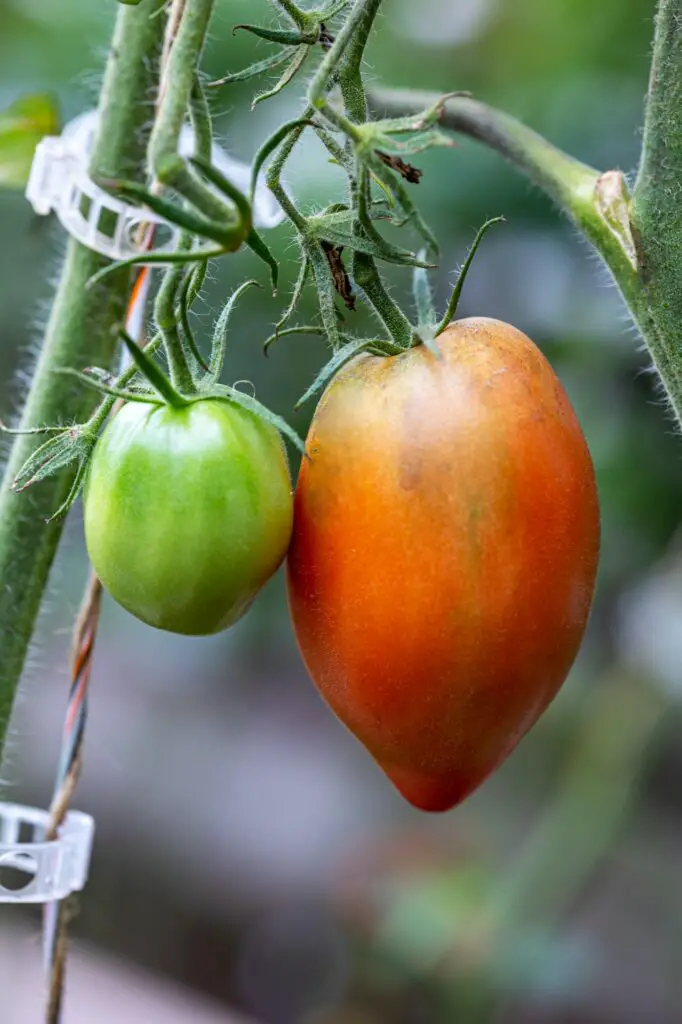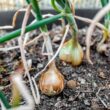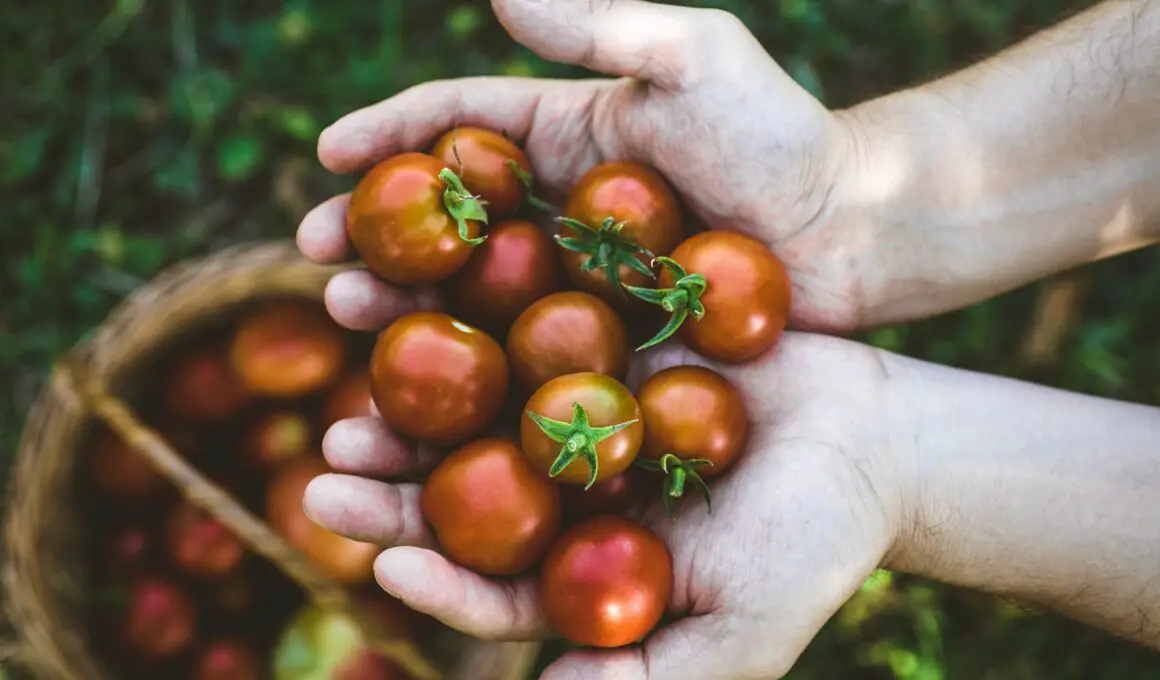In This Article Show
As someone who has spent over 13 years cultivating green havens and sharing insights through regular blogs, it’s always exciting to explore new facets of the gardening world. Today, we’re tackling a question that often sprouts in the minds of both novice and seasoned gardeners: Can you plant a sprouting tomato?
Tomatoes, those juicy delights that grace our salads and sauces, have an intriguing life cycle. Beyond the familiar routine of sowing seeds, there’s another avenue to explore – planting sprouting tomatoes.
In this article, we’ll navigate through the practicalities of this unconventional approach, shedding light on its benefits and offering a step-by-step guide to get you started.
Can You Plant A Sprouting Tomato?
Yes, you can plant a sprouting tomato. Planting sprouted tomatoes offers faster growth, and increased germination success, and is cost-effective for home gardeners.
Benefits of Planting Sprouting Tomatoes

When it comes to cultivating tomatoes, the conventional route involves starting from seeds. However, planting sprouting tomatoes introduces a range of advantages that can elevate your gardening experience. Let’s delve into the specific benefits:
Get Gardening For Beginners
Our new EBOOK shows newcomers and green thumbs alike a step by step guide to growing the garden of their dreams.
Faster Growth and Development
One of the key perks of planting sprouting tomatoes lies in the acceleration of the growth process. Unlike starting from seeds, which demand time for germination and initial growth, sprouted tomatoes have already taken that crucial first step.
This head start translates to quicker development, meaning you’ll be enjoying ripe, plump tomatoes on your plate in a shorter timeframe.
For gardeners who relish the satisfaction of a swift and efficient growing cycle, opting for sprouting tomatoes can be a game-changer. This advantage is particularly appealing for those in regions with shorter growing seasons or for those who simply can’t wait to relish the fruits of their labor.
Increased Chances of Successful Germination
Germination can be a delicate phase in the life of a tomato plant. Factors such as soil conditions, temperature, and moisture levels all play pivotal roles. Planting sprouting tomatoes minimizes the uncertainties associated with germinating seeds, providing a higher likelihood of successful germination.
By choosing already-sprouted tomatoes, you’re essentially skipping the early, vulnerable stages of growth. This not only boosts your chances of a thriving tomato crop but also offers a more straightforward and reliable start for gardeners looking for a higher success rate.
Cost-Effectiveness for Home Gardeners
Home gardening is not only a passion but also an endeavor with practical considerations. Opting for sprouting tomatoes can prove to be a cost-effective choice for gardeners looking to maximize their resources.
Purchasing seeds, especially of specific varieties, can incur additional expenses, not to mention the time and effort invested in nurturing them to the sprouting stage.
Get Gardening For Beginners
Our new EBOOK shows newcomers and green thumbs alike a step by step guide to growing the garden of their dreams.
In contrast, planting sprouting tomatoes can be a budget-friendly alternative. It allows you to make the most out of store-bought tomatoes that may have started sprouting naturally. This frugal approach aligns with the ethos of many home gardeners who seek both quality and economy in their green pursuits.
In the next section, we’ll guide you through the step-by-step process of planting sprouting tomatoes, ensuring you harness these benefits effectively in your tomato-growing endeavors. So, let’s roll up our sleeves and get those hands back in the soil!
Step-by-Step Guide to Planting Sprouting Tomatoes

Now that we’ve uncovered the advantages of planting sprouting tomatoes, it’s time to get our hands dirty – metaphorically and literally. Follow this straightforward guide to turn those sprouted tomatoes into a thriving tomato patch.
Selecting the Right Sprouted Tomatoes
Inspect the Sprouts
Begin by examining the sprouts on your tomatoes. Look for well-developed and healthy sprouts emerging from the tomato’s top or sides. Avoid tomatoes with mold, rot, or signs of disease.
Choose Quality Varieties
If possible, choose tomato varieties that thrive well in your local climate. Consider the size and type of tomatoes you prefer, ensuring a satisfying harvest down the line.
Purchase or Utilize Homegrown
You can either purchase store-bought tomatoes that have started sprouting or use tomatoes from your garden. This way, you’re not only recycling kitchen scraps but also ensuring a smoother transition to your specific growing conditions.
Preparing the Soil for Planting
Select Well-Draining Soil
Tomatoes prefer well-draining soil to prevent waterlogging. Choose a quality potting mix or prepare your garden soil with the addition of organic matter for improved fertility and drainage.
Ensure Adequate Sunlight
Pick a planting location that receives at least 6–8 hours of sunlight per day. Tomatoes are sun-loving plants, and proper sunlight exposure is crucial for their growth and fruit development.
Adjust Soil pH
Aim for a slightly acidic to neutral soil pH ranging from 6.0 to 7.0. You can test and adjust the soil pH using commercially available kits.
Planting Techniques for Sprouted Tomatoes
Dig Planting Holes
Dig holes in the soil large enough to accommodate the root system of the sprouted tomato. Ensure proper spacing between plants to allow for adequate airflow.
Remove Lower Leaves
Gently remove the lower leaves from the tomato plant, leaving a few leaves at the top. This helps promote airflow and prevents potential diseases.
Plant at the Right Depth
Bury the sprouted tomato in the hole, ensuring the buried portion includes the sprouted part and a few inches of the stem. This encourages the development of a robust root system.
Care and Maintenance Tips for Young Tomato Plants
- Watering: Keep the soil consistently moist, but not waterlogged. Tomatoes require regular watering, especially during dry spells. Water at the base of the plant to minimize the risk of diseases.
- Mulching: Apply a layer of organic mulch around the base of the plants to conserve moisture, regulate soil temperature, and suppress weeds.
- Supporting the Plants: As your tomato plants grow, provide adequate support using stakes or cages to prevent sprawling and ensure proper air circulation.
- Fertilizing: Use a balanced fertilizer or organic compost to provide essential nutrients. Follow recommended guidelines for fertilization based on the specific needs of your tomato plants.
By following these steps, you’re well on your way to transforming those sprouted tomatoes into a flourishing tomato haven.










